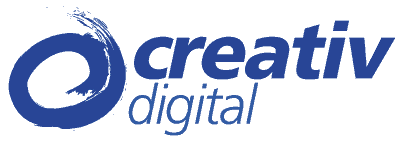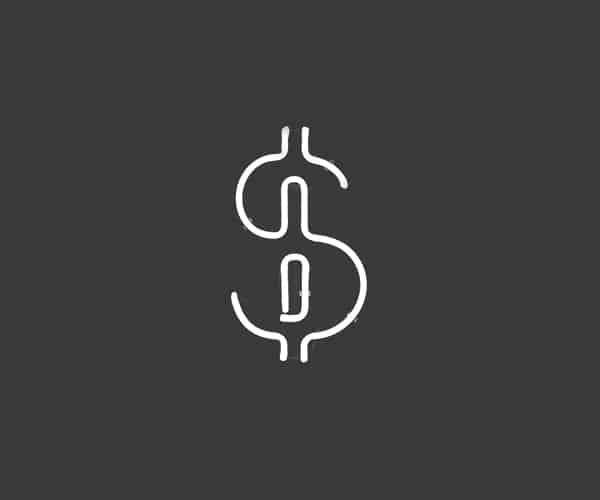1 – Intro to UX and FinTech
You can immediately relate to the feeling associated with the financial tools and solutions used by people in the fintech industry. Some evident adjectives to describe the overall experience can consist of ‘bland’ and ‘boring’.The need is for UX to be applied specifically to the fintech domain and its users’ perception and behavior. This will help elevate the overall human-machine interaction from dreary to incredible.
Building an appealing customer experience is essential for Fintech success
Irrespective of whether you are a bank, a non-banking financial corporation, a credit union, an insurance provider, a payment processing company, or a credit card company, you need to cope with two key issues in UX in fintech and banking:
a. The issue of compliance blending with great customer experience
While other industries can optimize UX easily, for fintech the specific issue of coping with KYC (Know Your Customers) and AML (Anti Money Laundering) norms leads to the need for users to fill in quite a bit of personal and financial details.
The challenge for fintech UX designers here is to adhere to ever increasing regulatory compliances without seeing a drop in customer engagement or without inadvertently encouraging abandonment.
- The issue of omni-channel banking preferences
Optimizing your digital presence and processes to a growing mobile-centric user base is important. At the core of this requirement is the fact the technology is evolving at a mind-boggling pace, and customers are using the omni-channel approach to complete the customer journey. They want a similar, seamless, and consistent experience on the laptop, mobile, iPads, or desktops.
Some stats that corroborate the above core UX issues with Fintech industry :
These statistics from a Frost & Sullivan report show why the above UX issues are real and growing
- 49.4% of the customer interactions with the bank happen digitally (emails, social media, websites, or apps). In-person interactions constitutes 37.9% while voice calls account for 12.6%
- A whopping 88% users use 2+ channels when interacting with a bank
- The lack of proper digital user experience means that loyalty too is fast dwindling. 26.8% say they are somewhat loyal while 20.6% say they are not loyal. The choice of options available on the digital medium means that a total of 47.4% stay neutral or ‘not loyal’.
These banking UX trends denote the pressure on UI/UX performance to prevent customer attrition.
2 – Constituents of an excellent FinTech UX
a. Designed to excite
Good fintech user experience needs to let customers almost forget that they are using a financial services app. This thought itself improves engagement level perceptibly. This can be achieved by clean and simple interfaces as opposed to the annoyingly cluttered UI offered by many banking and financial services institutions apps.
The key to achieving this is similar to other great product designs in the market i.e.
Focus on the customers rather than your own proficiencies.
In line with what the tech companies do, a fintech app too can be developed with the same agile techniques, built in quick iterations, and make improvements depending on the real-world feedback from beta users.
b. Remove cognitive biases
Check any successful digital financial services product and you will see that the most successful ones are the simpler ones too.For an expert in UX in finance, it is crucial to understand that the key rationale behind this is that your users will be vastly different from you.
Make sure to differentiate between the fintech professionals’ knowledge and the understanding of the wider customer base.B removing such cognitive biases, you would be thinking about the customers’ needs and their grasp of fintech knowledge rather than factoring in your financial wizardry.
You need to factor in their habits,instincts, and their irrational behavior when developing the product. This way, it has a better chance of solving customers’ problems rather than showcasing your expertise.
c. Keep it simple to grasp
Did you know that there are around 22-25 pieces of information are required to be provided by the customer as a part of the KYC and AML protocols? Now imagine if all these fields were packed into one screen? Considering the limited mobile screen real estate, it will be a frustrating experience for the customer.
In order to guide the users through the process without annoying them here are some measures:
1 – Make it piecemeal
Sure, collecting so much information on a mobile device will be taxing for the customer. However, it will make a significant difference when you design the fintech user experience structure in such a way that they feed in bits of data at any given time.
Also, start off by asking for bare minimum information (similar to other sites asking to sign up using Facebook or Google ID rather than using a lengthy form). Once the customer is ready to do the first transaction or transfer, then they can provide other info like PAN or address.
2 – Unburden the customer
How about removing loads of form filling requirement by expanding the ways in which you accept the details? For instance, for PAN card, you can simply have them click a snap and mail it to you. This way rather than typing on the small screen space, they can get on with the information provision work more quickly.
3 – Be detailed in explaining the need for Personal Information
Users consider it a breach of privacy if they are asked to disclose certain details like date of birth on the digital medium. As a fintech UX designer, you need to explain to the client to put clear guidelines on why certain personal information is needed?
For instance,you may mention that date of birth is needed to verify it against your passport as a valid ID proof.
d. It is deeply secure
The point about ‘keeping it simple’ as discussed above needs to be implemented tactfully. This is because keeping too open an interaction medium also is fraught with potential attacks from hackers. The basic security authentication has to be there.
Unlike other industries, in the fintech world, users don’t mind going an extra step to enter the PIN or other security information and is actually encouraged in the beta testing round. An expert in UX in financial services has to understand the fact that trust is as important as simplicity in a fintech product
3 – How to leverage UX in FinTech and banking product development stage?
As a fintech company,you can leverage online banking user experience to create deeply memorable and powerful customer experiences around your digital channel or product.While many banks and institutions will have multiple flavors of creating stellar experiences,the below 5-step plan is a good way to start off to build compelling UX design for a banking institution
Step 1 – Site goals and user needs
This the strategy phase where the online banking UX designer, developer, business analysts, and other stakeholders need to get together to brainstorm on what is the strategy behind putting up a site or an app. What should be the feature set that needs to be present and what should the look and feel be like?
It should look at the competition and existing pain points of customers to determine what functionalities need to be present in the app. The objective of this stage is to start slow and gain momentum in the right direction of design and development as per customer needs.
Step 2 – Scope of functional specs and content
The road to take to meet the site goals and user needs are spelt out in this phase. Elements like user stories and software objectives are determined in this phase. This phase also lists down the number of steps to be taken by the customer to finish a particular action or activity.
The objective of this stage is to use the takeaways from Step 1 and convert it to an actual tech project requirement
Step 3 – Developing the structure
Once we know what has to be done, we then need to get down to see how it can be done. The Information Architecture and Design is created at this stage.
Online banking design modules are devised (admin, banking personnel, customer, or backend) and information flow is designed for maximum customer delight. Some essential questions to tackle here include –
- How do each module and each element within a module interact with another
- How fast can a user retrieve the information he is looking for?
- How fast the activity can happen and if there is a shorter way to do the same?
Step 4 – Wireframing
A designer, UX expert, and developer will sit together and sketch out a basic skeleton of the website or app structure. With basic drawings, the wireframes seek to answer a few important questions like
- Layout and format of the app
- Placement of important elements 9images, call to action buttons, text content) within a page or screen
- Navigation of the information flow and task completion
Step 5 – Site goals and user needs
The last step is the first look at how the finished product will look like. It adds high level flesh to the skeleton and gives an idea of the visual design principles employed in the app. Aspects factored in this stage include color themes, typefaces, multimedia graphics, buttons, and corporate branding.
4 – How to improve FinTech UX
Now that you know about the steps to go about in delivering a UX centric design, it will be wise to know how you can improve on the same. This will help you to go above and beyond in your aspirations to serve the customer to the fullest in the BFSI industry. Here are some ways to improve financial services UX:
a. Mapping customer journey
The UX designer needs to acknowledge that the customer journey is not linear. It can take multiple paths based on the type of touchpoint accessed. So, for instance, we can’t expect the same journey for a website vs. a social media platform.
Also, customers are bound to carry out the full activity at an intermittent time period and not all at one go. They may start with a mobile, go to a bank’s website, or visit the social media profile.
For a UX designer, it is pertinent to understand the customer journey so that appropriate interaction and communication across multiple devices and touchpoints can be done. You can look at getting answers to questions like:
1 – What are the customer needs?
2 – Are the needs being met satisfactorily?
3 – What is their experience with the current digital channels they use?
4 – How does the interaction on one channel affect another?
b. Segmentation is the key
For banks, NBFCs, insurance companies, and credit unions, true value can be derived by providing the right offers, deals, and marketing messages to the right set of people at the right point in time. This is why it makes sense to segregate the customers into logical segments and provide tailored offers to each segment.
The more granular you go, the more are the chances of delivering stellar personalized customer experiences. Some areas that can drive segmentation strategies include geo location, banking history, interaction with customer support, or social media analysis.
A good example of this strategy in play is how a financial institution managed to tailor the images shown on the website banner based on the current mortgage they had. Based on this info, they were shown relevant products as a part of its cross-selling objectives.
c. Bridging the offline-online gap
It was pretty simple in the olden days with just one touchpoint – the bank branch. With tech evolution, however, the list of possible touchpoints that customers can interact with has grown to phenomenal levels – branch, ATM, social media, website, customer voice support, to name a few.
Despite the cost efficacy of these digital channels (which operate at a fraction of the branch overheads), it is true that branches still operate globally. This calls for the financial services UX designer to design an experience that can function seamlessly in both models – the offline (or physical) world as well as the online (or digital) domain.
So, a financial advisor at a branch needs to have the latest data about customer’s financial behavior, his last set of tasks, and his on-going concerns. This way, the customer need not repeat the entire story to an offline customer support executive. And this is a hallmark of good banking UX.
d. Focus on the mobility driven ecosystem
With people increasingly going mobile to carry out financial transactions or to interact with fintech companies, it becomes important to focus on this burgeoning segment. UX experts in financial services need to recognize the role of a mobile as not only a service enabler but also a customer experience driver. It not only improves operational efficiencies but also helps build lasting relationships.
The key to accomplish this objective is to let the customers know at every step of the customer journey that someone is there to help deliver a positive experience to the customer. Measures like proactive notifications and reminders can help a lot in this aspect.
To Sign Off
Focusing on fintech UX design is a must in developing products for the banking or fintech industry. It is vital to note that the developers and business stakeholders need to focus on the customer rather than on the technology or on their own skillset.
With increasing popularity of digital and rise of fintech solutions providers, it is only natural that more and more customers will interact with these companies using the digital medium. The question here will be – Are you ready to serve them to the best of your ability?
About the Author
Prabhasa Kota, Co-founder & Director, WinkTales
Prabhasa started his career and entrepreneurial journey with WinkTales, he loves to share his experiences on starting up and sustaining in the volatile start-up industry as a millennial entrepreneur.



